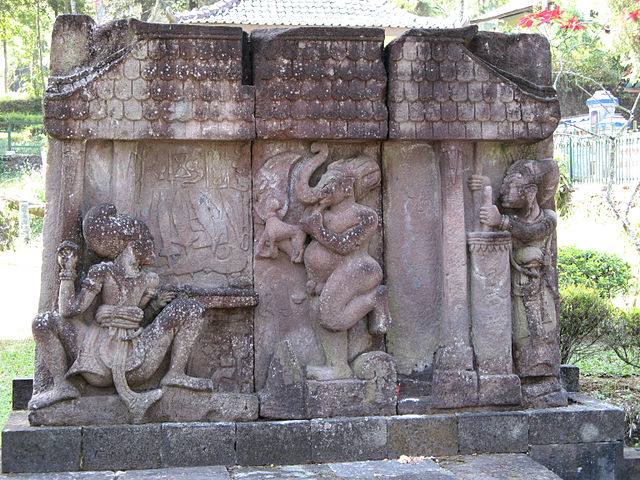
Keris Relief (Blacksmith Relief)
Candi Sukuh

|
Keris Relief (Blacksmith Relief)Candi Sukuh |
The forging of iron, and in particular of the iron knife-blades known as kris, or keris, had a spiritual significance in Indonesia that is comparable to the special importance of sword-making in Japan. The Indonesian iron-worker was allocated to a special caste, that stood outside the typical Hindu caste system and did not necessarily yield, in precedence, even to Brahmins.
The present relief is highly celebrated, and has been exhibited abroad. In the left panel, a blacksmith is forging a kris; he extends its blade into the fire. A tier of three shelves above his left shoulder illustrate (1) the tools of his trade (bottom shelf: a file, hammer, etc.) (2) the weaponry he produces (middle shelf: a knife, etc.) and (3) the ceremonial objects he produces (top shelf: finials). In the right panel, an assistant pumps the bellows that extend, along the bottom of the relief, to the forge in the left hand panel. In the central panel, an elephant-headed god dances upon a platform while holding a dog.
Stanley J. O'Connor1 (1985) identifies the blacksmith as Bhima, and the elephant as a Tantric form of Ganesh. However, this scheme, especially as regards Bhima, is doubted by other scholars, who feel there is simply not enough evidence to positively identify the figures.2
1
Stanley J. O'Connor, Metallurgy and Immortality at Candi Sukuh, Central Java, Indonesia, Vol. 39 (April 1985), pp. 53-70
2 The Sculpture Of Indonesia, pp. 175-176.

|

|